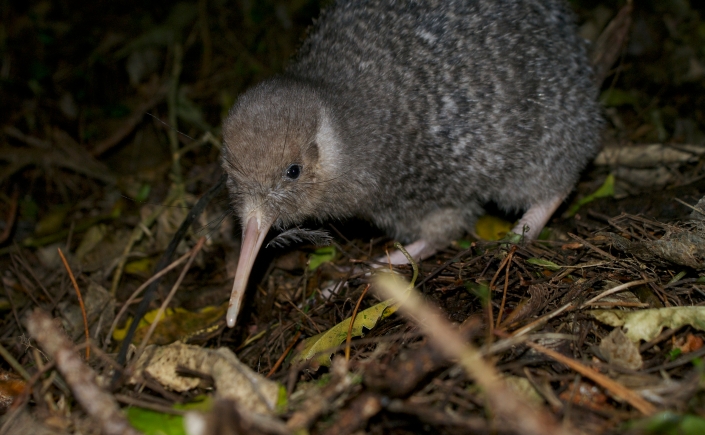They are crosses between Little Spotted Kiwi and Rowi.
During my BSc studies in Biology, I dreamed of discovering a new species. That process would also involve the description of a so-called holotype, a unique specimen or illustration of the novel species. Ideally, the holotype shows the typical characteristics of the newly described species. When no holotype has been designated, taxonomists can also rely on other specimens which are called syntypes. The Great Spotted Kiwi (Apteryx haastii), for example, has two syntypes (CM AV2828 and CM AV2829). These specimens were collected at Okarito – a location on the South Island of New Zealand – during an expedition in 1870-1871.
Genetic analyses of these two syntypes led to an unexpected finding: they are hybrids between the Little Spotted Kiwi (A. owenii) and the Rowi (A. rowi). This discovery emerged from a larger genetic study into kiwi hybridization.
Hybrid Kiwi
Lara Shepherd and her colleagues focused on Okarito because it holds the only remaining natural population of the threatened Rowi. Until 1978, this species co-occurred – and potentially hybridized – with the Little Spotted Kiwi. Given that kiwi can live for more than 50 years, it is possible that some hybrids are still around. And indeed, based on genetic analyses of museum specimens and living birds, the researchers reported “evidence for recurrent hybridization between Rowi and Little Spotted Kiwi over the last 150 years, including one F1 hybrid found in the last 15 years.”
At the moment, however, there are no first-generation hybrids or backcrosses in the Rowi population at Okarito. This suggests that there has been no recent introgression from Little Spotted Kiwi into Rowi. On the one hand, this is good news. High levels of hybridization can lead to genomic extinction when small populations become swamped by another species. On the other hand, hybridization can be beneficial by introducing new genetic variation that allows small populations to adapt to new conditions (although this remains controversial among conservationists who can be obsessed with “genetic purity”).

A New Name
Let’s return to the type specimens of the Great Spotted Kiwi. The discovery of their hybrid nature has some interesting implications. A new type specimen for the Great Spotted Kiwi will need to be appointed. Following the International Code of Zoological Nomenclature, the next candidate is a specimen that bears the scientific name Apteryx maxima Sclater and Hochstetter 1861. Genetic analyses of this specimen confirmed that it is not a hybrid but a representative of the present-day Great Spotted Kiwi population (see figure above). Hence, the Great Spotted Kiwi will get a new scientific name.
References
Shepherd, L. D., Tennyson, A. J., Robertson, H. A., Colbourne, R. M., & Ramstad, K. M. (2021). Hybridisation in kiwi (Apteryx; Apterygidae) requires taxonomic revision for the Great Spotted Kiwi. Avian Research, 12(1), 1-13.
Featured image: Little Spotted Kiwi (Apteryx owenii) © Kimberley Collins | Wikimedia Commons
